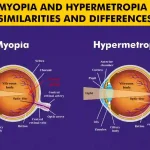Summary:
Blade-free cataract surgery at Centre For Sight uses advanced femtosecond laser precision for safer, personalized procedures, ensuring faster recovery, minimal complications, and sharper, spectacle-free vision with lasting visual clarity.
|
Key Takeaways:
|
The human crystalline lens, which is clear and transparent, is part of the focusing mechanism of the eye. With age, the lens becomes cloudy and opaque, thereby hampering normal vision. This condition is called ‘Cataract’ or ‘Safed Motia’. Most cataracts are the result of the natural process of aging. Other causes of cataract are metabolic disorders such as diabetes, excessive exposure to sunlight, lifestyle disorders like heavy alcohol consumption and smoking. Injury to the eye can also lead to clouding of the lens of the eye.
About half the population by the age of 60 will get cataract, while around 80 per centpeople will have cataract in atleast one eye by the age of 70 years.
What Is Blade-Free Cataract Eye Surgery?
When you’re diagnosed with cataracts, choosing the safest and most effective treatment is crucial. Blade-free cataract surgery, also known as femtosecond laser-assisted cataract surgery is a cutting-edge technique that eliminates the need for traditional surgical blades. This advanced procedure uses precise femtosecond laser technology to perform key surgical steps with exceptional accuracy. The result is a gentler, safer, and more predictable experience, offering patients improved visual outcomes and faster recovery.
What the Procedure Involves
In this technique, the clouded natural lens is removed and replaced with an artificial intraocular lens (IOL). The key difference is that with the blade-free approach, the most delicate steps are executed by a laser rather than manual blades. According to Centre For Sight, the femtosecond laser automates the most crucial steps in cataract surgery, giving greater precision and safety.
Why Choose Blade-Free Cataract Surgery?
Here are the core benefits of opting for this modern method:
- Greater precision and accuracy: With the blade-free procedure, live OCT imaging guides the laser for a more personalised surgery.
- Reduced risk and improved safety: Automating key steps means less chance of human error and fewer complications.
- Faster recovery: Many patients notice vision improvement the day after surgery, and full recovery often comes soon after.
- Correcting vision beyond the cataract: During the blade-free cataract surgery, existing astigmatism can also be addressed, which means you may need fewer or no glasses afterwards.
What to Expect During Your Visit
At Centre For Sight, the process begins with a thorough evaluation to confirm your cataract and determine suitability for this blade-free method. On the day of surgery:
- The femtosecond laser creates precise incisions and helps segment the lens.
- The clouded lens is removed and replaced with the IOL.
- Because the procedure is blade-free and stitch-free, the surgical experience is smoother and more comfortable.
- Post-operative instructions, medications, and follow-up visits are provided to ensure optimal healing.
Conclusion
Whether you’re experiencing blurred vision, glare from lights, or increasing difficulty with night vision — classic signs of cataract development — exploring the blade-free cataract surgery option could be the game-changer for you. With the combination of cutting-edge femtosecond laser technology and the expertise of Centre For Sight’s ophthalmology team, you’re set on a path toward clearer, brighter vision.
FAQs
What is blade-free cataract surgery?
It’s a laser-assisted cataract procedure using femtosecond technology for precise, blade-free incisions.
Which is better, laser or blade cataract surgery?
Laser cataract surgery offers higher precision, fewer risks, and faster recovery than traditional methods.
Which operation is best for cataracts?
Blade-free or laser-assisted cataract surgery is currently the most advanced and safest option.
What is the newest method of cataract surgery?
Femtosecond laser-assisted, or blade-free cataract surgery, is the latest innovation in treatment.
Which is the best blade-free cataract hospital in Delhi?
Centre For Sight is renowned for advanced technology and expert care in blade-free surgery.





